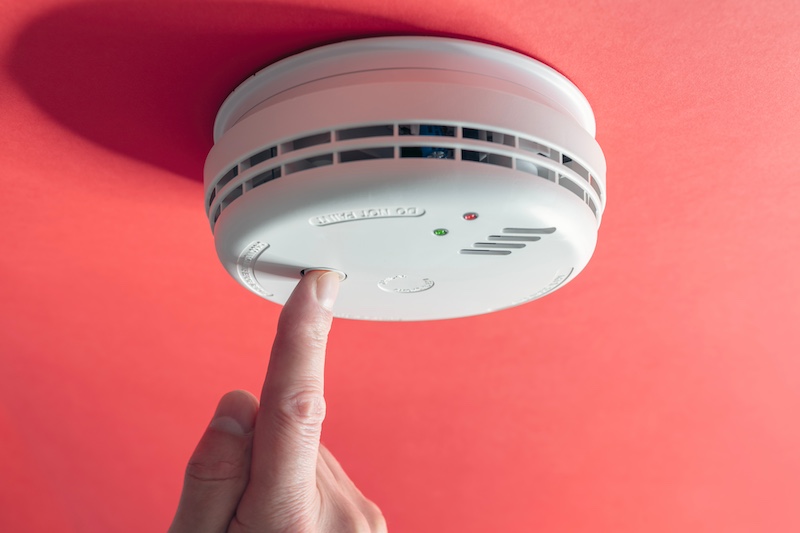The first step to ensuring the safety of a premises is the requirement to produce a recorded Fire Risk Assessment, this applies to all businesses no matter the size. The duty of the responsible person for a building/business is to identify any hazards and risks to your premises and take appropriate action to reduce them.
You can find more information about the five-step approach on our Fire Risk Assessments page.
Updated Fire Safety (England) Regulations 2022 – (the heading)
You must have a recorded FRA in accordance with the Regulatory Reform (Fire Safety) Order 2005 (as amended). If the Fire Safety (England) Regulations 2022 apply to your business, then these need to be included:
The responsible person has overall responsibility to take precautions for the safety of the premises and the employees. They are required to take steps to reduce any likelihood of a fire occurring and spreading and ensure there is minimal injury to people in the premises if there is a fire. In the workplace, the Responsible Person is the employer.
You are responsible for your own Fire Risk Assessment, and we cannot do it for you, however, you can appoint a competent person to undertake the Fire Risk Assessment for you.
What you should do: depending on your business size
Your Fire Risk Assessment will identify what you need to do to keep the premises safe. For example, what provisions you need to put in place and how to manage them. This could be practicing emergency procedures and training staff.
It is legal requirement to record your fire safety arrangements for effective planning, organisation, control, monitoring and review of the measures in place.
Your Fire Risk Assessment will have an Action plan as part of it. It will identify what you need to do to keep the premises safe. These may be fire safety deficiencies highlighted in your action plan by your fire risk assessor and they will have appropriate time frames to get them fixed.
The time frame depends on the Fire Risk Assessor and do vary, so it's important to check. For example, you might have to 'educate people what to do if there is a fire' or 'systems in place to alert people such as fire alarms and emergency lighting'.
The Regulatory Reform (Fire Safety) Order 2005 (as amended) states that the premises should be appropriately equipped with appropriate fire-fighting equipment and fire detectors and alarms. This will be detailed in your fire risk assessment. This will all be dependent on the activities that happen on site and size of the premises.
For more information on fire alarms, please visit our fire alarms page.

Since October 2024, we have stopped attending automatic fire alarms in most commercial buildings between 7am & 8:30pm unless we receive a call reporting a fire. You need to check if you are or aren't exempt.
Depending on your premises, you might need equipment like sprinklers, firefighting facilities dry/wet risers, kitchen suppression systems, and fire extinguishers.
Your Fire Risk Assessment should say what equipment is required, such as, what type of fire extinguishers is required (Water, Foam, Wet Chemical, Dry Powder, etc)
Due to their environmental impact, Aqueous Film-Forming Foam (AFFF) extinguishers are being phased out and will no longer be suitable after 04 July, 2025. Responsible Person’s should ensure that foam extinguishers are reviewed and replaced with a suitable substitute by this time.
If you have a fire extinguisher, there should be someone trained to use it (nominated fire marshal), and is recommended to be visually checked every 24 hours, and depending on the type*, serviced yearly by a competent person.
You should only attempt to fight a fire if it safe to do so or received training by a competent person if not, get out and call the Fire Brigade on 999.
*P50 extinguishers don’t need an annual check by an engineer
All escape routes should lead to a fire exit that must lead you to an area of Safety.
Fire doors are important to stop fire and smoke spreading, if they are damaged, they need to be repaired or replaced.
Fire Doors should be inspected regularly and you should:
Though prevention is always best, you are also required by law to make a detailed fire emergency evacuation plan. This is so that your people can keep themselves and members of the public out of danger.
You can establish and put procedures in place such as safety drills to follow in the event of serious and immediate danger to anyone on site. There should be competent people trained in the event of an emergency to carry out this plan.
A simple emergency plan must show that you have, among other things:
You can find out more about Emergency plans on our dedicated Emergency plans page
To see more information about what training should be covered and why, please visit our fire safety training page.
Dangerous substances are substances that are explosive, oxidising, flammable, highly flammable, or extremely flammable. They require additional measures to manage. For more information on how to comply with guidance, please check the Health and Safety Executive website.
The Regulatory Reform (Fire Safety) Order 2005 (as amended) requires you to eliminate or reduce the risk as much as possible to people from the presence of these dangerous substances. We recommend you seek specialist advice if you are not sure.
Fire Safety Inspecting Officers/Fire Safety Advisors will carry out inspections to ensure premises are safe and the RP is complying with the Fire Safety Order, covering the above topics.
It is important to note, though they can be booked in, they can be carried out without notice.
We will be looking at:
After an inspection, we may:
If you are unsure about the outcomes, contact the fire safety inspecting officer/ fire safety advisor, contact businesssupportgroup@london-fire.gov.uk and sign up to our business fire safety webinars and newsletters for more information.

We'll be running a webinar to discuss LFB & Businesses, what's important to keep your business safe, along with Q&A sessions

Subscribe to the our Business Engagement Team's newsletter for essential updates and insights that help safeguard your business.